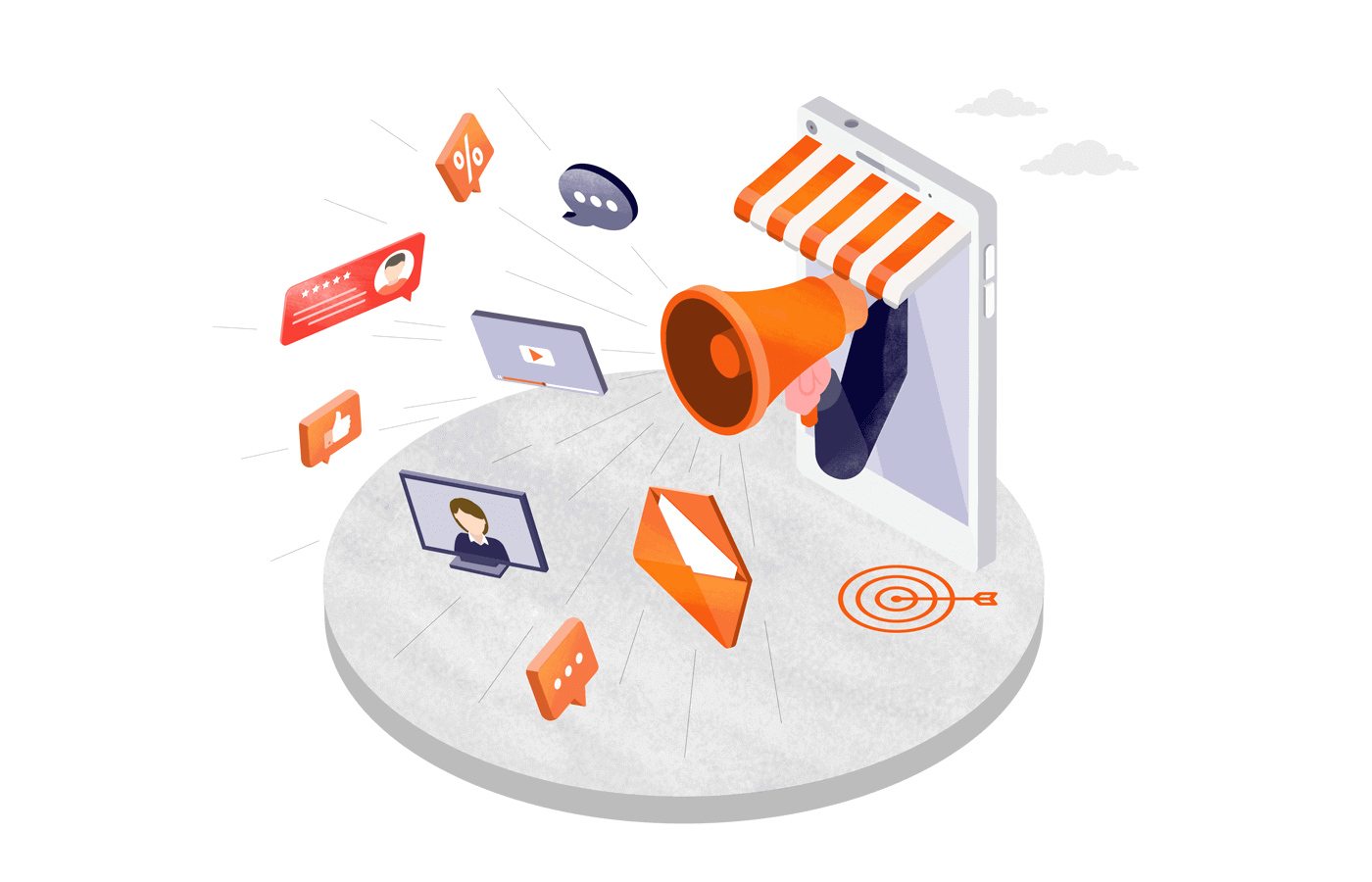Retail marketing is changing—fast. What worked a year ago might not cut it today. If you’ve ever wondered why some stores always seem packed while others struggle, the answer isn’t just in their products.
It’s in how they market, engage, and bring customers back. At Sender, we’ve worked with countless retailers—big and small—helping them craft campaigns that actually drive sales.
In this blog, we’ll break down what retail marketing really means, why it’s crucial, and five powerful strategies that will help your business thrive in 2025. Let’s dive in!
What is Retail Marketing?
Retail marketing is all about getting products in front of the right customers and making them want to buy. It’s not just about advertising; it’s about creating an experience that attracts, engages, and keeps existing customers coming back.
From traditional store displays to digital campaigns, successful retail marketing blends the right mix of product, price, place, and promotion to turn interest into action.
Here’s what you must know about retail marketing:
- It’s more than just selling—it’s about experience;
- Retail marketing happens both online and offline;
- Personalized marketing boosts engagement and repeat purchases;
- Data helps refine and improve marketing efforts.
But in 2025, simply being visible isn’t enough—you need a compelling strategy to convince customers.
Retail Marketing Mix
To attract, convince, and retain customers, you need more than just great marketing campaigns. You need to use the four Ps of marketing — product, price, place, and promotions.
Here’s how you should use them for retail marketing:
- Product. Offer the right mix of quality, variety, and demand;
- Price. Balance profitability with competitive and customer-friendly pricing;
- Place. Sell where your customers shop—online, in-store, or both;
- Promotion. Use advertising campaigns, emails, and social media to drive sales.
By mastering these elements, you can create a seamless shopping experience that keeps your customers engaged and coming back for more.
Importance of Retail Marketing
An effective retail marketing strategy does more than promote products—it keeps customers engaged, builds loyalty, and maximizes revenue.
Here’s why a retail marketing plan is essential for success:
- Strengthens brand recall. Keeps your business top of mind for potential customers;
- Expands your reach. Online, offline, and multi-channel strategies connect you with your target market;
- Levels the playing field. Helps smaller brands compete with large ecommerce players;
- Drives repeat purchases. Customers return when they see value in your offerings consistently through marketing efforts;
- Increases customer lifetime value. Engaged shoppers stay loyal and spend more over time.
Different Types of Retail Marketing
Retail businesses use various marketing strategies to reach and engage customers. Be it a small shop or a global brand, the right mix of strategies will always help drive sales and boost customer satisfaction.
Here are the major types of retail promotion strategies:
Store-Based Retail Marketing
If you operate a physical store, in-store marketing and experiences play a major role in attracting and retaining customers. Here are some key approaches for local retail marketing:
- In-store promotions. Offer discounts, flash sales, or exclusive in-store deals to boost foot traffic;
- Product sampling. Free samples encourage your target audience to try and buy new products;
- Interactive displays. Digital kiosks or touchscreens provide product info and enhance engagement;
- Loyalty programs. Reward frequent shoppers with discounts, points, or personalized offers.
You must’ve seen product sampling happening all the time at Costco or a big box retailer near you. Here’s how product sampling looks in action.
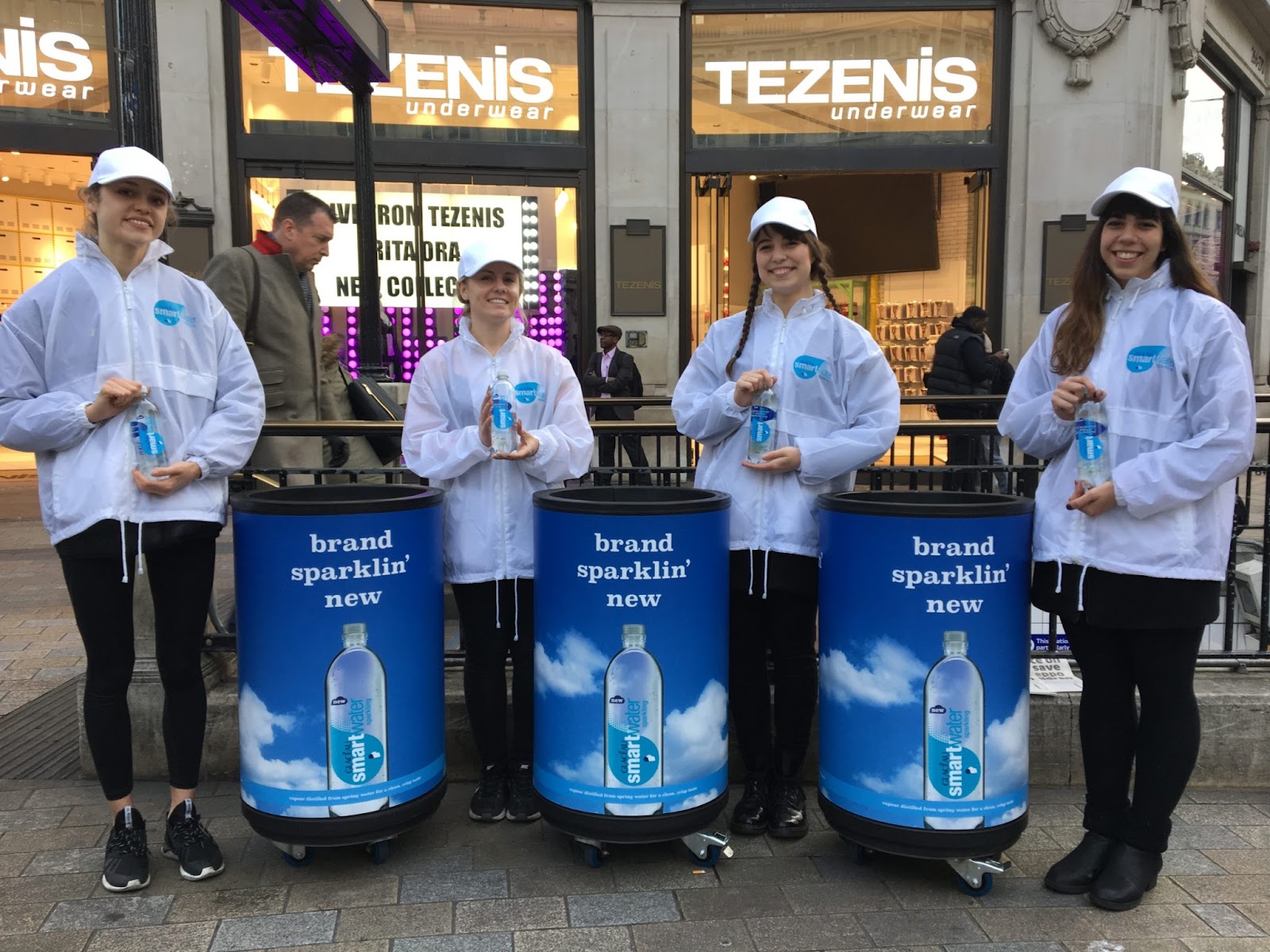
Non-Store-Based Retail Marketing
Retail marketing extends beyond physical retail stores, using direct and digital channels to engage customers.
Some of the tactics you can use include:
- Direct mail & catalogs. Sending printed materials via mail to engage high-end audiences, especially as luxury brands;
- SMS marketing. SMS campaigns like personalized text offers and order updates keep customers engaged;
- Social media. Platforms like Instagram and Facebook help brands be discovered, build a community, and sell directly;
- Retail email marketing. A cost-effective strategy with high ROI for promotions and customer retention.
Here’s an example of email marketing being used smartly by a brand that sells both online and offline.
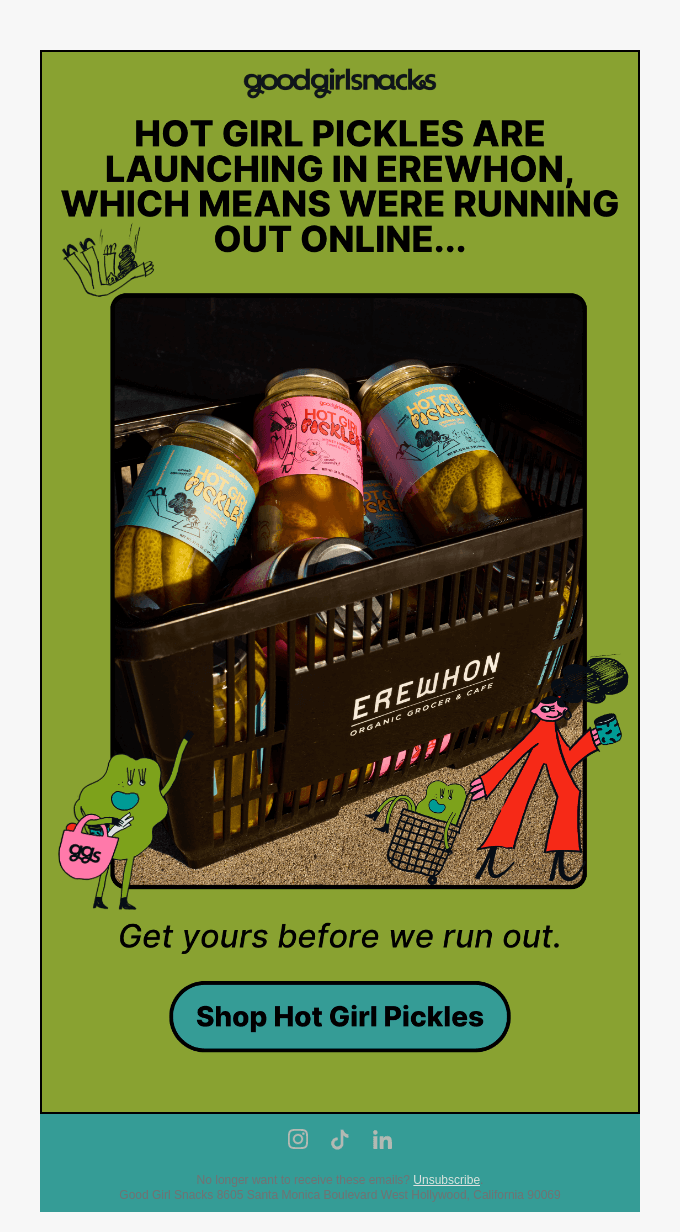
Digital Retail Marketing
Digital marketing is essential for every retailer, whether selling online or in-store.
A strong online presence will help you reach a wider, more targeted audience while providing convenience.
Here’s what you should explore:
- Building an ecommerce website. A well-optimized website or online store helps you take online orders;
- Search engine marketing (SEM). Paid ads on Google help attract shoppers actively searching for products;
- Content marketing. Blogs, videos, and guides educate customers and improve brand authority;
- Retargeting ads. Retargeting ads remind past visitors about products they viewed but didn’t buy.
Brands use channels like YouTube all the time for special promotions or during special days like Valentine’s Day. Have a look at the following video by Macy’s promoting Valentine’s Gifts:
5 Retail Marketing Strategies
Retail marketing trends are evolving, and sticking to traditional marketing or just one channel won’t cut it anymore.
The most successful brands in retail industry use a mix of digital, direct, and personalized retail marketing strategies to engage customers.
Here are five retail marketing tactics for building brand loyalty and staying ahead in 2025:
1. Retail Email Marketing
Email is a powerful tool for driving sales and customer retention. With an average open rate of 36%, retail email marketing remains one of the most effective strategies for growth.
But blasting the same message to everyone won’t work—segmentation is key. Use customer data to personalize emails based on past purchases, browsing behavior, or loyalty status.
Automate your campaigns to send welcome emails, abandoned cart reminders, and exclusive discounts at the right moments—keeping your customers engaged without much manual effort.
Save time & effort with Sender. Easily create email campaigns with premade templates, automate them and watch the numbers grow!
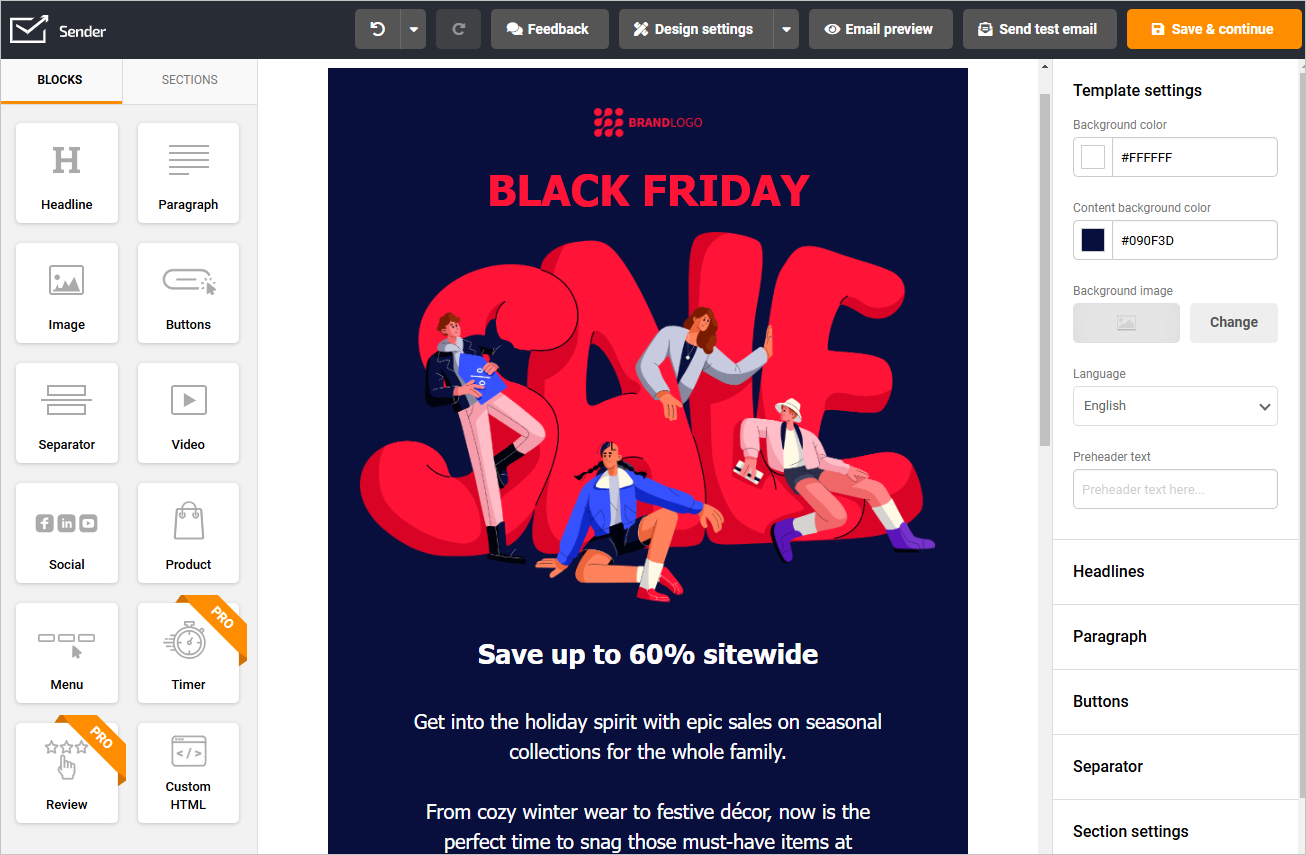
2. Retail Text Message Marketing
SMS is personal, direct, and action-driven, making it an essential part of any modern retail strategy. With a 99% open rate, SMS marketing ensures your message gets seen instantly.
It’s especially effective for flash sales, exclusive deals, and time-sensitive offers that drive immediate action.
Use SMS marketing to send:
- Discount codes & vouchers. Personalized offers based on shopping history;
- New product alerts. Notify customers about fresh stock or limited-edition items;
- Holiday & seasonal messages. Strengthen customer relationships with festive greetings and deals.
3. Omnichannel Retail Marketing
Customers no longer shop in just one place—they move between stores, apps, emails, and social media before making a purchase.
Omnichannel marketing ensures a seamless experience across all touchpoints. There are many ways omnichannel efforts can help your brand.
Here are some ideas for omnichannel retail advertising:
- Sync online & offline sales promotions. A deal seen in an email should match in-store pricing;
- Using automation. Trigger emails or texts based on in-store visits or website activity;
- Personalizing experiences. Recommend products based on previous customer interactions.
Integrating multiple channels will help you increase brand recognition, reduce churn, and customer lifetime value.
Your customers move between emails, stores, and social media—so should your marketing.
4. Influencer Marketing for Retail Brands
Influencer marketing isn’t just about celebrity endorsements anymore—it’s about authenticity and trust.
Retailers who collaborate with niche influencers can tap into highly engaged audiences without sounding overly promotional.
Here’s how to do it right:
- Find influencers who genuinely align with your brand. Forget follower count—engagement matters more;
- Leverage micro-influencers for product recommendations. Their smaller but loyal audiences trust them more than big names;
- Use influencer-generated content in your own marketing. A video review, unboxing, or styling session can double as an ad;
- Experiment with affiliate codes & referral discounts to track influencer-driven sales without huge upfront costs.
Done right, influencer marketing feels like a friend’s recommendation, not an ad—which is exactly why it works.
5. Social Media Marketing for Retailers
With billions of active users, social media is a goldmine for retailers.
Retailers that strategically mix organic content, paid ads, and influencer collaborations on these platforms win big in digital marketing.
Each platform plays a different role in brand awareness, engagement, and conversions. Here’s how:
- Facebook. Great for targeted ads, retail customer engagement, and live shopping events;
- Instagram. A must for visual-driven brands (fashion, food, beauty), with Reels and Stories boosting reach;
- YouTube. Perfect for longer-form content like product demos, behind-the-scenes looks, and tutorials;
- Google Ads. Boosts both ecommerce and in-store traffic, with high-intent mobile shoppers clicking on PPC campaigns.
Successful Retail Marketing Campaigns Examples
The most effective retail marketing campaigns tap into customer behavior, seasonal demand, and brand loyalty.
So, it’s a good idea to take advantage of peak shopping seasons, reward repeat customers, or collaborate with other brands.
Here are some of the best retail marketing campaigns ideas:
Seasonal Sales Campaigns
Seasonal retail promotions are one of the biggest revenue drivers for retailers. Tap into events like back-to-school shopping, or Black Friday to boost sales, clear inventory, and attract customers.
Seasonal sales aren’t just about slashing prices—they’re about creating excitement that makes customers want to shop. The more engaging the event, the bigger the impact on your bottom line.
Here are some events and promotion ideas:
- Black Friday & Cyber Monday. Run insane discount campaigns or offer mystery deals where customers reveal their discounts at checkout. Give early access to VIP email subscribers;
- Holiday promotions. Create a ‘12 Days of Deals’ countdown or bundle popular products into holiday gift sets. Offer free gift-wrapping for added convenience;
- Back-to-School deals. Launch a ‘Buy More, Save More’ sale on essentials, or partner with schools for exclusive student discounts.
Here’s an example of a Black Friday email campaign by Michael Kors that offers a sneak peek and tempts users to check out the special prices.

Want to see more winning email campaigns? Check out 22 Black Friday email examples to help you stand out.
Loyalty Programs
Customer loyalty programs can turn one-time buyers into repeat customers. These campaigns often integrate email marketing, SMS notifications, and exclusive in-app perks to keep members engaged.
Starbucks has one of the most successful loyalty programs with approximately 41% of the U.S. sales contributed by its members.
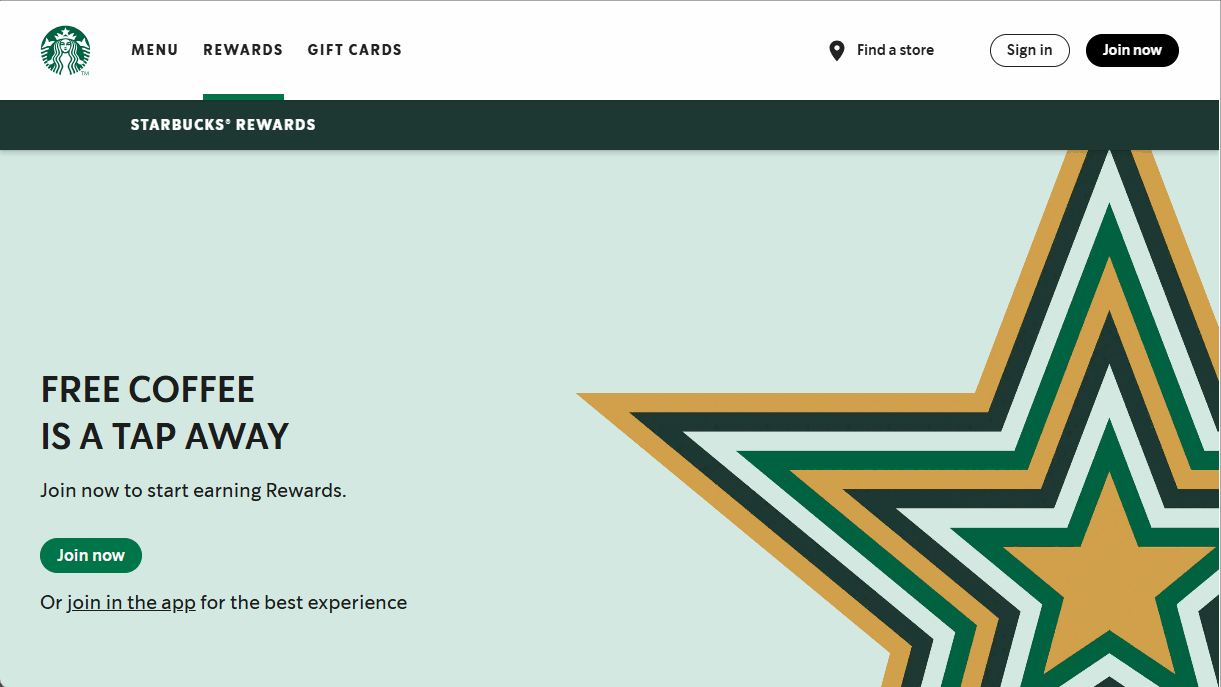
When done right, customer loyalty programs in retail make customers come back again and again. Here are some ideas:
- Point-based rewards. Let customers rack up points for purchases, reviews, or referrals—then redeem them for discounts or freebies (Starbucks-style!);
- Exclusive member perks. Offer early access to sales, birthday rewards, and surprise gifts to keep members engaged. A little exclusivity goes a long way;
- Tiered programs. Reward your most loyal customers with higher-tier perks—free shipping, bigger discounts, or VIP-only experiences for top spenders.
Running a loyalty program is a successful retail marketing strategy used by biggest global brands. But remember, it’s not just about discounts—it’s about making customers feel like insiders.
Collaboration Campaigns
As a retailer, team up with brands, influencers, or designers to create hype, exclusivity, and attract new customers.
Customers love exclusivity, limited access, and one-of-a-kind experiences, making these campaigns a game-changer for retail brands. The right collaboration can drive demand, especially when paired with scarcity marketing or limited-time offers.
Here are some ideas:
- Brand collaborations. Launch co-branded products that blend two audiences (think Nike x Off-White sneakers or McDonald’s x BTS meal);
- Limited-edition drops. Create time-sensitive, exclusive releases to drive urgency—like a seasonal flavor or a celebrity-designed collection;
- Pop-up shops. Set up short-term retail spaces in high-traffic areas or partner with complementary brands for a multi-brand experience.
One interesting example of collaboration that comes to our mind is from Baskin Robbins. They collaborated with the Stranger Things franchise, renamed one of their stores ‘Scoops Ahoy’ and served inspired flavors from the Show, like Eleven’s Heaven.
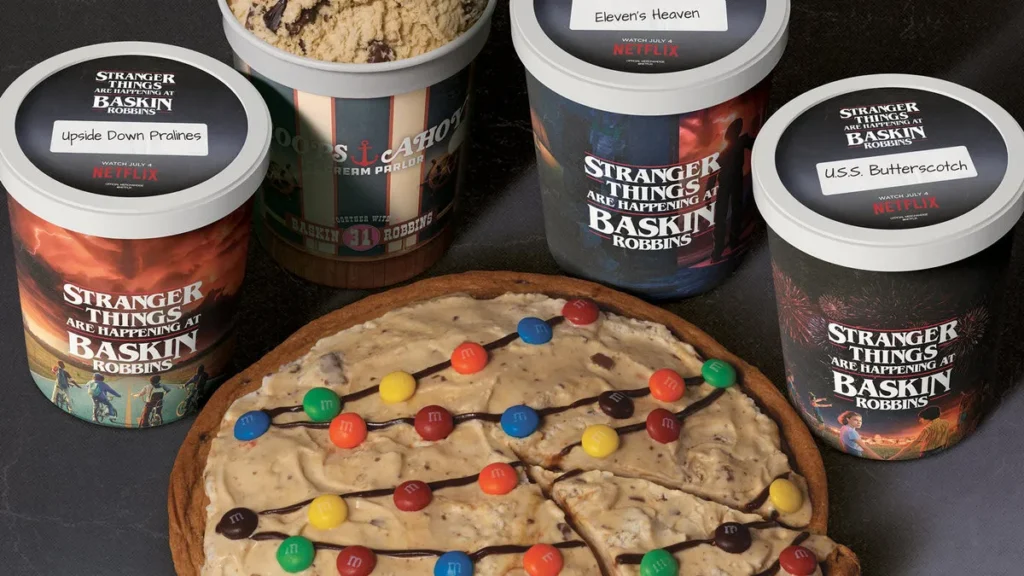
The collaboration helped promote the show to a new audience and also garnered five billion media impressions for Baskin Robbins. Also, the sales for the ‘Scoops Ahoy’ store also rose by 150%.

